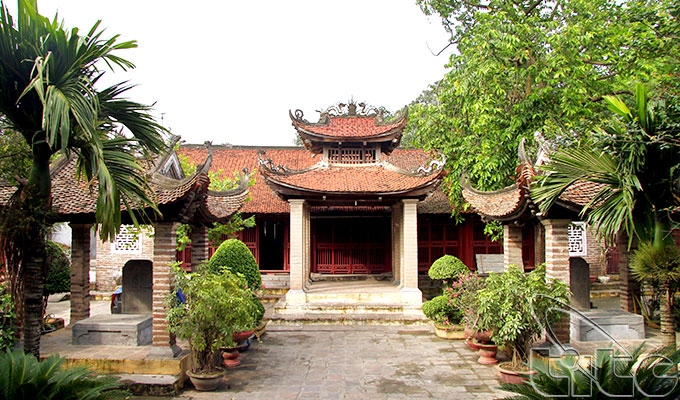The Chem Communal House, dating back more than 2,000 years and one of the oldest of its kind in Viet Nam, in Bac Tu Liem district of Ha Noi was awarded a certificate as a special national relic site on June 25.

The Chem Communal House in Bac Tu Liem district
of Ha Noi was recognised as a special national relic site
The Chem Communal House in Thuy Phuong ward is dedicated to Ly Than, also known as Ly Ong Trong or Saint Chem, who was born in Chem village under the reign of Hung Due Vuong, the 18th and last of the Hung Kings – the legendary founders of Viet Nam, whose rule ended in 258 BC.
Legend has it that Ly Ong Trong supported An Duong Vuong, who took power from Hung Due Vuong, to defeat the Qin invaders from the north and fulfill his mission of keeping peace when he served as an envoy to the Qin Dynasty. He was considered Viet Nam’s first diplomat.
To commemorate Ly Ong Trong, residents in Chem village (now Thuy Phuong ward), Hoang village and Mac village (now Lien Mac ward) hold a festival on the 15th day of the fifth lunar month each year. This festival was named national intangible cultural heritage in 2016.
Chem Communal House is home to many objects with high historical and artistic values, including three royal recognition decrees from the Nguyen Dynasty (1802 – 1945), a millennium-old incense burner and a bronze gutter system made in 1748, 1756 and 1824.
The recognition re-affirms the historical, cultural and architectural values of the communal house.
Secretary of the Party Committee of Bac Tu Liem district Truong Quang Thieu underlined the urgency of preserving and promoting of cultural values of Chem Communal House. He noted that the district will step up communications to raise public awareness and make use of local historical and cultural relic sites, especially the Chem Communal House, to develop tourism.